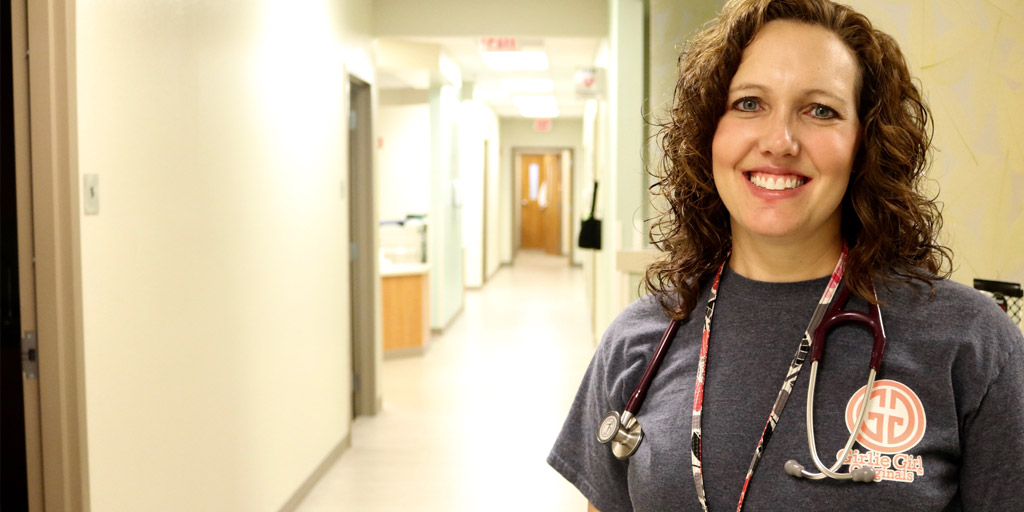Dr. Julie Stewart has lived in Kansas her entire life. But her experience in the state has bridged two different worlds – the urban setting of her childhood, and the rural communities where she now serves as a physician with the Community Health Center of Southeast Kansas. For Julie, the change of scenery between the state's urban and rural communities offered a life-changing perspective on providing care to Kansas families.
Julie's clinical focus is delivering primary care services, but many Community Health Center of Southeast Kansas patients would need to drive two to three hours for specialty care, depending on what is needed." For those in need of specialty services, like dermatology or cancer support, the trip can be very difficult or prohibitive. That's why UnitedHealthcare teamed up with the Community Health Center of Southeast Kansas to start a new telehealth program, designed to connect more families who are living in the state's rural communities with care.
Bridging the Gap Through Telehealth
Julie's personal experience with Kansas' rural and urban communities is supported by recent data. According to United Health Foundation's America's Health Rankings (AHR) 2016 Annual Report, Kansas falls far below the national average for availability of primary care physicians. With only 129 primary care doctors per 100,000 people statewide, families who live far from their providers are less likely to receive preventive services and treatments.
In fact, people in Kansas' rural counties have significantly worse health outcomes compared to Kansans living in other parts of the state. Rural residents often live 10 to 15 years less than those in highly-populated areas. For this reason, telehealth has made such a difference in connecting patients with the services and support they need.
Early interventions, made possible through telehealth technologies like those offered at the Community Health Center of Southeast Kansas, allow patients and providers to address key health problems—including cancer, heart disease and neurological disorders. This added service will lead to better health outcomes, longer life expectancies and lower costs for families and communities.
Julie has seen first-hand how telehealth has helped take the burden off an already over-stretched primary care system. "Telehealth bridges the gap for us. It gives me the confidence as a physician to do as much as I can…then we connect [patients] with the specialist who can 'close that gap' and provide the holistic care that patients need and deserve."
Because providers at the Community Health Center of Southeast Kansas clinics have access to these new technologies, doctors are more accessible than ever to Kansans living in areas where the physician shortage is most impacted. For rural Kansans who previously faced major barriers to receiving care, the access that telehealth provides can make all the difference and will go a long way in helping build a healthier Kansas.
Learn more about how we are partnering to build a healthier Kansas.

Share This Story